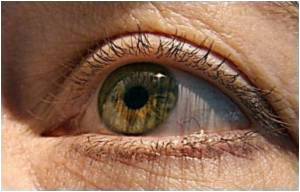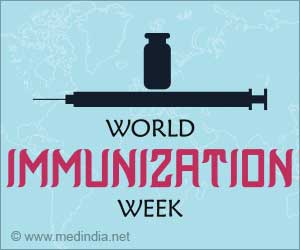
“More than 1.5 million older Americans have age-related macular degeneration, the most common cause of irreversible vision loss among older patients,” the authors write as background information in the article. Of these, 12 percent have neovascular disease, which occurs when new blood vessels form in the eye and accounts for more than 80 percent of cases of severe vision loss. Before June 2006, there were two approved therapies for this condition, both of which slow vision loss but usually do not improve visual acuity: photodynamic (laser) therapy in combination with the photosensitizing medication verteporfin, and eye injections with pegaptanib octasodium, a nucleic blocking abnormal blood vessel growth.
By the fall of 2005, ophthalmologists began treating AMD with the cancer drug bevacizumab, an antibody that also blocks blood vessel growth. In June 2006, ranibizumab — an antibody fragment with a similar mechanism — was approved by the Food and Drug Administration for treatment of AMD. “In chemotherapy regimens, bevacizumab is associated with an increased risk of thromboembolic events,” when a blood clot forms and travels through blood vessels, potentially causing a stroke or heart attack, the authors write. “However, intravitreous bevacizumab is administered at a dose of 1 to 2.5 milligrams, 150 times less than the systemic dose. Despite the regulatory approval of ranibizumab, off-label use of bevacizumab continues, likely because of the cost difference ($1,950 per dose of ranibizumab vs. $30 per dose of bevacizumab. The relatively safety of the therapies is unknown.”
Lesley H. Curtis, Ph.D., and colleagues at Duke University School of Medicine, Durham, N.C., and colleagues analyzed records from 146,942 Medicare beneficiaries who received treatment for AMD in 2005 or 2006. Reports of deaths, heart attacks, bleeding and stroke were tracked through 2007.
There were no differences in the risk of death or heart attack between the bevacizumab group and any other therapy group, and bleeding events or stroke did not differ by treatment group. Patients who received ranibizumab therapy were less likely to die or have a heart attack than those who received photodynamic therapy and less likely to have a heart attack than those given pegaptanib. The authors note that there is no evidence that photodynamic therapy and pegaptanib use is associated with increased risks of adverse systemic effects, so the differences may suggest residual confounding.
“In conclusion, we found no evidence of increased risks of mortality, myocardial infarction, bleeding or stroke among Medicare beneficiaries who received intravitreous ranibizumab or bevacizumab for neovascular age-related macular degeneration,” the authors write.
Advertisement
Source-Medindia













